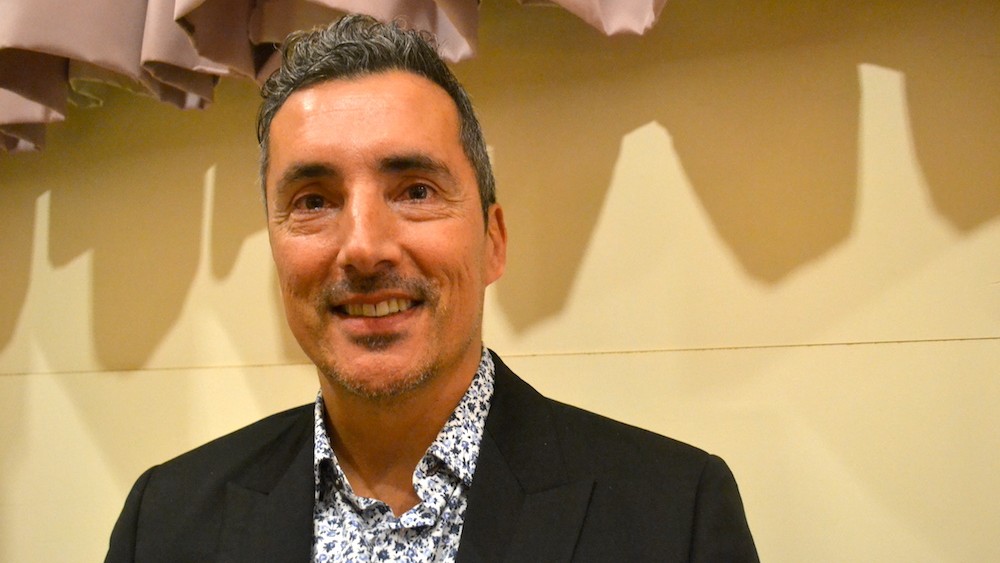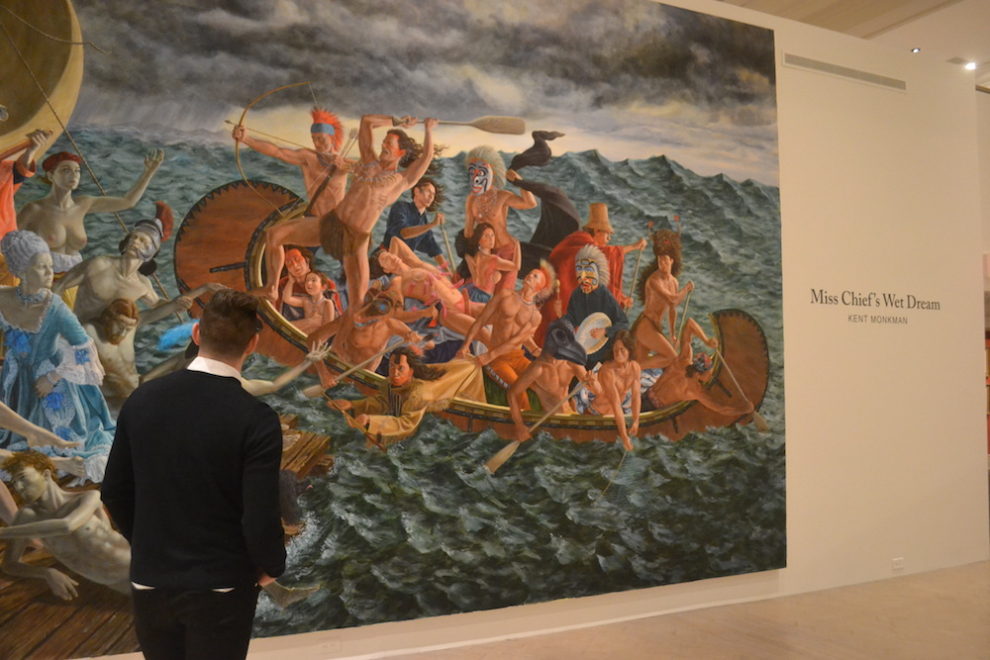‘Reverse the gaze’: Kent Monkman springs Miss Chief in the museum
Cree artist is shattering the colonial perspective of history and beckoning in the future of art

caption
Kent Monkman was in Halifax on Feb. 27 to give a talk called "Miss Chief in the Museum."For Cree artist Kent Monkman, the hard work of tearing down the colonial perspective of art history happens from the inside.
With humour and camp as well as dignity and heroism, Monkman’s gender-bending, time-travelling alter ego Miss Chief Eagle Testicle kicks down the door of colonial institutions with a Louboutin heel. The larger-than-life provocateur acts as a medium through which Indigenous perspectives can take centre stage in museums from The Met in New York to the Art Gallery of Nova Scotia.
When painted posing naked in front of the Fathers of Confederation in The Daddies or as John A. MacDonald’s foreign bride in A Country Wife, Miss Chief is in on the joke.
“I created her kind of out of instinct and a desire to have a really outrageous character that could really just shatter a lot of the myths in art history and reverse the gaze,” said Monkman.
Monkman was in Halifax on Feb. 27 to give the Alex Fountain Memorial Lecture at the University of King’s College. His talk, “Miss Chief in the Museum,” explored the importance of bringing Indigenous perspectives into the way museums tell stories.
“Museums tell the story of our societies,” Monkman said in an interview before his talk. “I think that museums have a responsibility to represent different perspectives, but they don’t always do that. They tell stories through a very Eurocentric lens.”
He makes his statements through humour, which is an important part of Cree storytelling.
“For me, art is transformation and part of that transformative process includes humour,” he said.
“It really allows my audience to access the work in ways that they’re open. If they’re open with humour, then they can be more receptive to some of the other messages which are more challenging and penetrating.”
The largest of Monkman’s works resides in the Art Gallery of Nova Scotia’s permanent collection. Miss Chief’s Wet Dream arrived at the gallery in October 2018. Colin Stinson, director of marketing and visitor experience, said the staff is overjoyed to have the painting.
“I think what the artist is showing here is a really important story, and it’s a conversation that we as Canadians really do have to have,” Stinson said.

caption
Miss Chief’s Wet Dream, the largest of Kent Monkman’s works, has been on display at the Art Gallery of Nova Scotia since October 2018.Miss Chief’s Wet Dream depicts a mythologized version of the Two Row Wampum Treaty of 1613, which was meant to establish a relationship of mutual respect between Indigenous peoples and arriving Europeans. The painting shows famous figures from European history, painted to appear sickly and struggling on a damaged raft, encountering a canoe of Indigenous people who offer them a symbol of peace in the form of a pipe. Miss Chief lies glamorously in the middle of the canoe, adorned with dreamcatchers and sporting a large erection.
Miss Chief’s Wet Dream is monumentally large and impossible to miss. Stinson said it is a piece many people stop at and contemplate for a long time.
“I think it’s important that museums and galleries are never one sided,” Stinson said, adding the painting will “act as a hinge for a very strong narrative.”
Monkman has a great reverence for the tradition of history painting. “When I look at that as an outsider, as a Cree person, I see this amazing medium of storytelling that can be relevant today, that can be very powerful,” he said. “It can tell stories and have an emotional impact in ways that photography can’t.”
He hopes his art connects with everyone, not just history buffs or fine art aficionados. “My work is for the world,” he said.
“What’s been driving me is this belief that painting can have such authority and can still have a relevance … What I’m trying to do with my paintings is to tap into that so that people can stand in front of a painting learn something about history, learn about Indigenous people, have an emotional or spiritual reaction and just the pleasure of seeing something beautiful or something challenging.”
About the author

Kaija Jussinoja
...